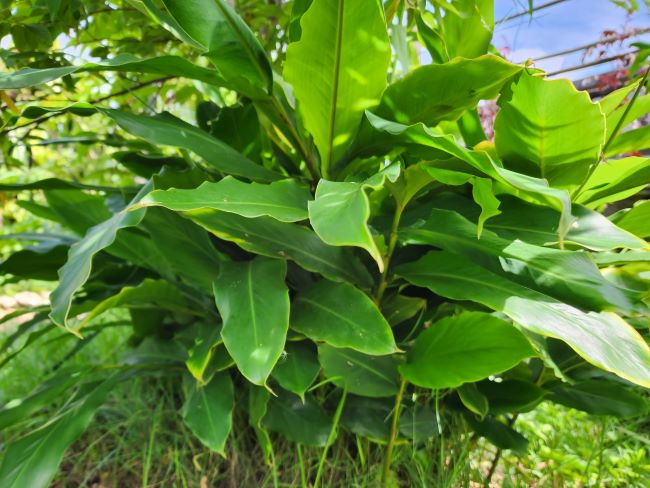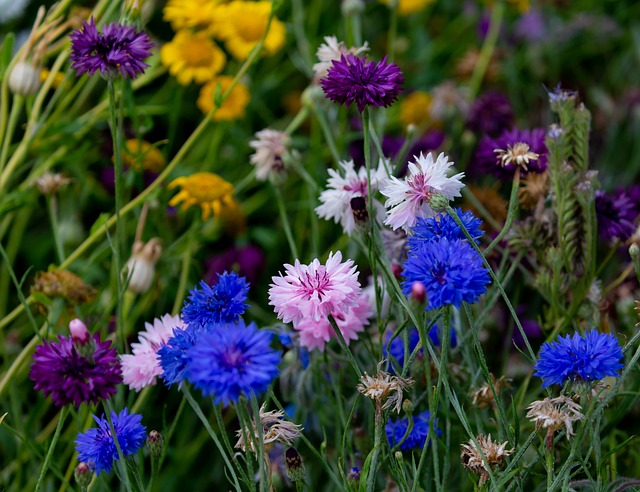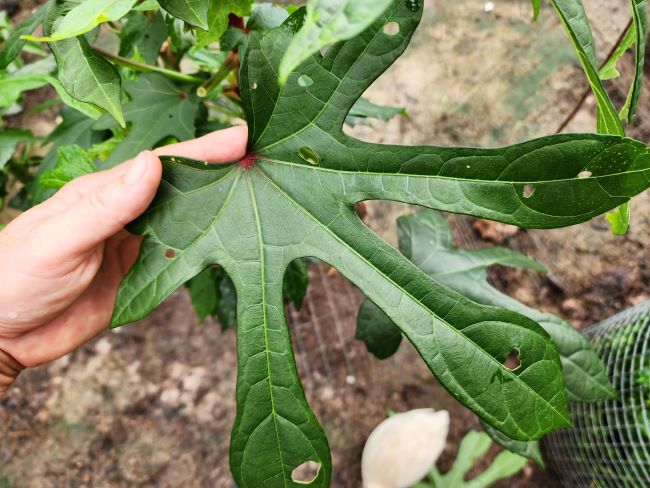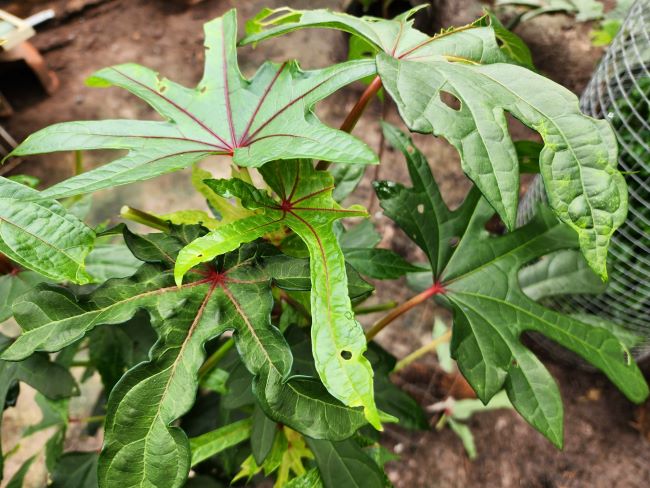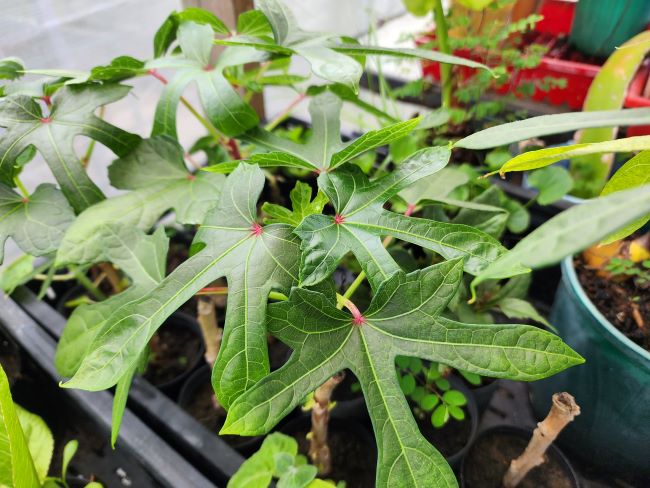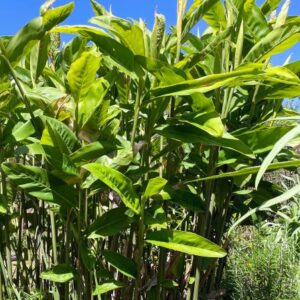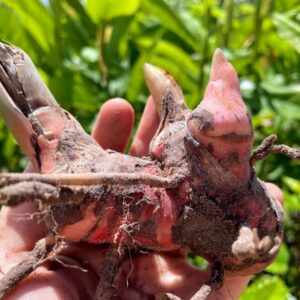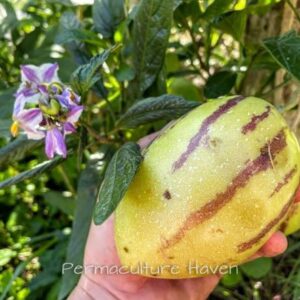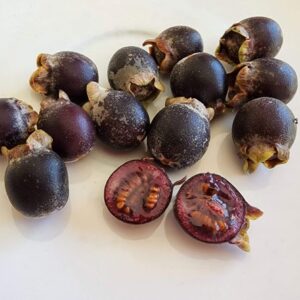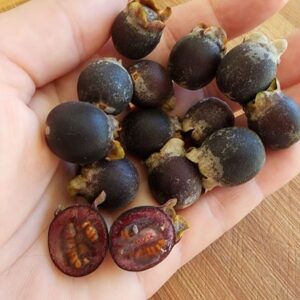Aibika Spinach PLANT – Hibiscus Spinach – Red Stem Tree Spinach – Hibiscus Manihot – Abelmoschus manihot – Heirloom Perennial #1
Original price was: $19.80.$14.90Current price is: $14.90.
Aibika Spinach PLANT – Hibiscus Spinach – Red Stem Tree Spinach – Hibiscus Manihot – Abelmoschus manihot is a hardy short-living perennial from the Malvaceae family. It can grow up to 3m in height. It produces large and soft leaves that can be enjoyed raw and cooked, steamed, baked, in stir-fries, or used to wrap food. Our animals, including quails, love them! Aibika spinach is very nutritious and has many health benefits – read some interesting facts in the description below. It grows as a perennial in subtropics and as an annual in cooler climates. Easy to propagate from a cutting during summer. It can be grown in a large pot, too.
More info below
Description
Aibika Spinach PLANT – Hibiscus Spinach – Red Stem Tree Spinach – Hibiscus Manihot – Abelmoschus manihot – Heirloom Perennial
Aibika Spinach PLANT – Hibiscus Spinach – Red Stem Tree Spinach – Hibiscus Manihot – Abelmoschus manihot is a hardy short-living perennial from the Malvaceae family. It can grow up to 3m in height. It produces large and soft leaves that can be enjoyed raw and cooked, steamed, baked, in stir-fries, or used to wrap food. Our animals, including quails, love them! Aibika spinach is very nutritious and has many health benefits – read some interesting facts in the description below. It grows as a perennial in subtropics and as an annual in cooler climates. Easy to propagate from a cutting during summer. It can be grown in a large pot, too. There are many different leaf shape varieties. I have three of them in my food forest.
Some interesting facts about Aibika Spinach – Abelmoschus manihot: “Its flowers have been traditionally used for the treatment of chronic kidney disease in China. Currently, more than 128 phytochemical ingredients have been obtained and identified from the flowers, seeds, stems, and leaves of A. manihot. The primary components are flavonoids, amino acids, nucleosides, polysaccharides, organic acids, steroids, and volatile oils. A. manihot and its bioactive constituents possess a plethora of biological properties, including antidiabetic nephropathy, antioxidant, antiadipogenic, anti-inflammatory, analgesic, anticonvulsant, antidepressant, antiviral, antitumor, cardioprotective, antiplatelet, neuroprotective, immunomodulatory, and hepatoprotective activities, and have effects on cerebral infarction, bone loss, etc. (Luan et.al, 2020)”
Aibika spinach is an easy-to-grow plant, that loves full sun, partial shade, and moderate watering. It thrives in summer and slows down in winter. The better the soil, the quicker and better it grows. All my plants grow happily in at least slightly raised garden beds. Even if it is just 15-20cm above the ground level, it makes a huge difference!
Planting and growing tips:
- Give it a good drink and place it in a half-shade position out of the wind.
- Leave it in the original pot for a few days until it recovers from the journey.
- Re-pot or plant into the ground at the latest when the roots start to come out of the bottom holes.
- Watering straight after planting is essential! From then on as required.
- It doesn’t like to sit in water so a well-drained position is best. All our edibles grow happily and quickly in slightly raised garden beds.
- It grows best in full sun and partial shade and in many types of soil, however, the better the soil, the quicker and better the plant will grow.
Additional notes:
- The price is for one young plant in a pot, coming from the mother plant, naturally grown with lots of love in my permaculture food forest in Pacific Haven QLD Australia. Sending within Australia only, not to NORFOLK ISLAND, NT, SA, TAS, or WA. Pick up by appointment only.
- Most of our nursery plants grow in a half-shade. Introducing them to the sun slowly before replanting them to their permanent position will promote healthy growth.
- Do your research before trying any new foods. Please also note our disclaimer in the footer of this page.
References: Luan, F., Wu, Q., Yang, Y., Lv, H., Liu, D., Gan, Z., & Zeng, N. (2020). Traditional Uses, Chemical Constituents, Biological Properties, Clinical Settings, and Toxicities of Abelmoschus manihot L.: A Comprehensive Review. Frontiers in Pharmacology, 11, 516691. https://doi.org/10.3389/fphar.2020.01068
Additional information
| Weight | 2.1 kg |
|---|
